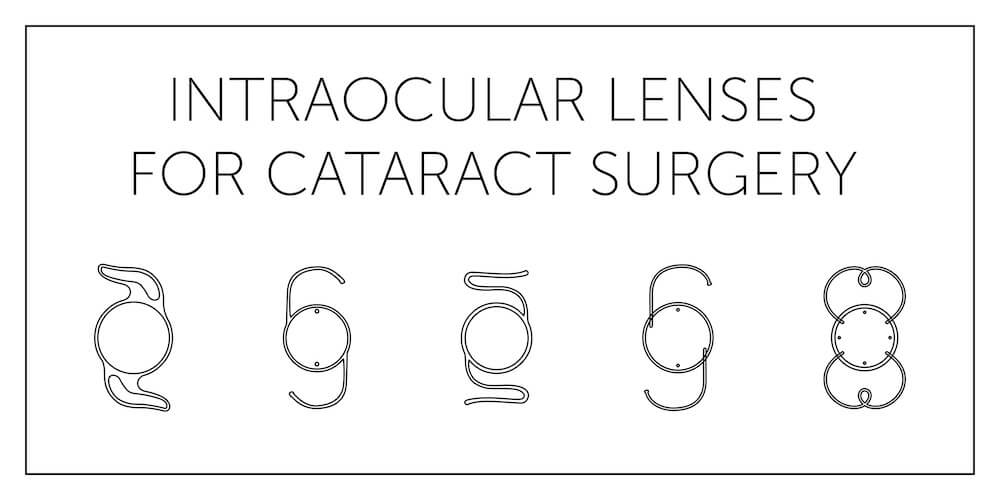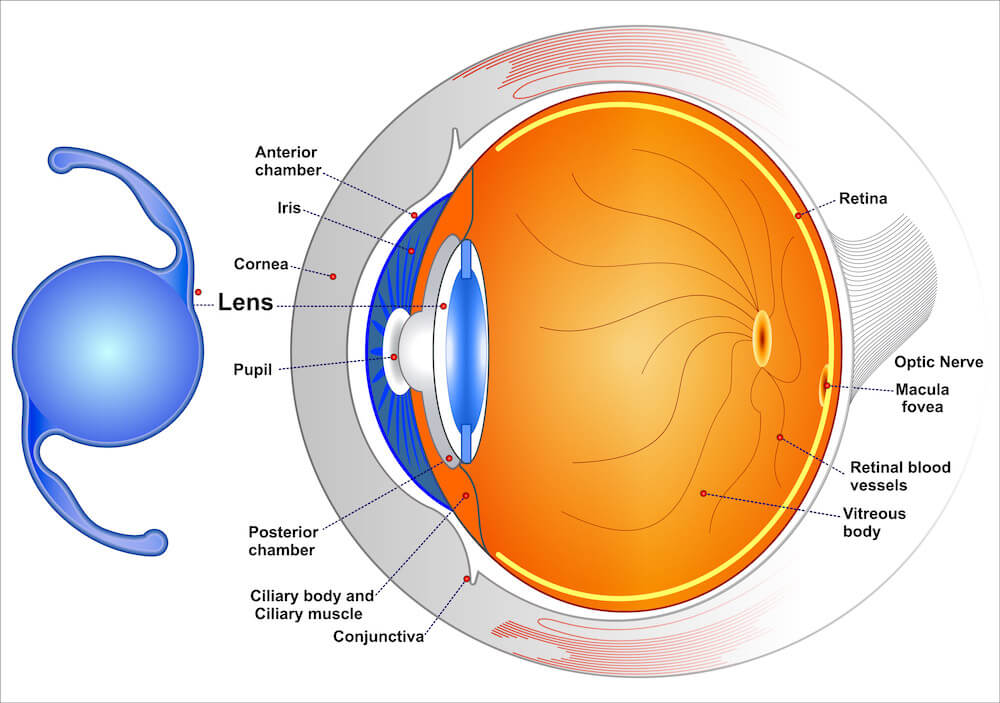
A cataract is a clouding of the natural lens inside your eye. This lens, located behind the colored iris, works just like the lens of a camera – focusing light on the retina, which sends images to the brain. The human lens can become so clouded with a cataract, however, that it keeps light and images from reaching the retina. A cataract can be the reason sharp images become blurred, bright colors become dull, or seeing at night becomes more difficult. It may also be why the reading glasses or bifocals that used to help you read and do other simple tasks no longer seem to help.
Vision with cataracts has been described as seeing life through old, cloudy film. But a cataract is not a “film” over the eyes, and neither diet nor lasers will make it go away, nor can it be prevented. Eye injury, certain diseases, or even some medications can accelerate the clouding, but the majority of cataracts are simply a result of the natural aging process. The most common way to treat a cataract is with surgery that removes the old, clouded lens and replaces it with a new, artificial one to restore your vision and help you get back to the activities you enjoy.
If you answer “Yes” to any of these questions, you may be showing early signs of cataracts, or have a cataract already.
Cataract surgery at Omni Eye Specialists is highly successful in the safe restoration of vision. We have
helped many patients throughout the Colorado area. Our Front Range Area Cataract eye surgery is
considered one of the most successful surgical procedures in all of medicine.
During cataract
surgery, the cataract-affected natural crystalline lens is replaced with an artificial intraocular lens
(IOL). IOLs are typically made of flexible material, allowing your surgeon to fold and insert the IOL
through a very small incision on the side of the cornea called phacoemulsification. Cataract surgery
using phacoemulsification involves a small (3-millimeter) (less than 3.0 mm) incision that is made with
an ultrasonic tip that vibrates at 40,000 times per second to remove the cataract from the eye
surgically. The incision is self-sealing, requiring no sutures. We have performed thousands of small
incision cataract surgeries in Front Range Area.
After the natural lens has been removed the lens often replaced by an artificial lens, called an intraocular lens, or “IOL.” A permanent intraocular lens (IOL), which is individually selected for each eye care patient, replaces the cataract lens. This IOL is a plastic lens that requires no care and becomes a permanent part of the eye. The IOL also has an ultraviolet filter to protect the retina, in the back of the eye, from sunlight injury. Cataract surgery is generally a relatively simple outpatient procedure with little discomfort, requiring only a few hours and a topical anesthetic.
Intraocular lenses (IOLs) are permanent, replacement lenses placed in the eye following certain ocular procedures. Similar to a camera lens, IOLs focus your vision and deliver a clear, crisp image.

While standard lenses are effective in improving vision and delivering a clear image, premium lenses specifically correct astigmatism as well as distance, midrange, and near vision.

Cataract surgery is a simple procedure with an excellent success record. The clouded natural lens is replaced with an artificial lens called an intraocular lens (IOL). It is done on an outpatient basis with a topical anesthetic that will make it a painless procedure. One eye is done at a time, with a short healing period in between.

Not all cataracts are related to aging, however. Cataracts can form as a result of diseases such as diabetes, inherited or caused by trauma to the eye. Cataracts have been linked to certain medication use such as steroids. Exposure to radiation has been associated with cataract formation.
The reality is everyone is at risk of developing cataracts, but there are some things you can do to keep your eyes healthy. One is to wear sunglasses and a hat with a large brim to block ultraviolet rays; these rays may ultimately factor in the development of cataracts. You should stop smoking if you do smoke. Some researchers believe that good nutrition can help reduce the risk of developing cataracts in old age and they recommend that people eat green leafy vegetables, fruits and other foods that contain a high level of antioxidants.
If you suffer any of the following symptoms, be sure to contact your eye care professional. Some of the symptoms of cataracts include: blurred or cloudy vision, glare—sunlight, lamps, or headlights might appear to be too bright and sufferers may also notice the halo that appears around lights, multiple images in one eye or double vision, and poor night vision.
Cataract surgery is a simple procedure with an excellent success record. The clouded natural lens is replaced with an artificial lens called an intraocular lens (IOL). It is done on an outpatient basis with a topical anesthetic that will make it a painless procedure. One eye is done at a time, with a short healing period in between.After making a very small incision outside your field of vision, your eye surgeon will insert a tiny probe and use ultrasound to break up the clouded natural lens. With suction, the pieces are easily removed, and through the same incision, the IOL is inserted and positioned correctly. You may have a protective shield to wear during sleep for about a week, and your eye surgeon will prescribe eye drops to be used several times each day for several weeks. For best results, it is very important that you follow your surgeon’s post-operative instructions exactly.
OFFICE HOURS
Monday-Thursday: 8:00 am-5:00 pm
Friday: 8:00 am-1:00 pm
Monday: 6:30am – 4:00pm
Tuesday: 6:30am – 4:00pm
Wednesday: 6:30am – 4:00pm
Thursday: 6:30am – 4:00pm
Friday: 8:00am – 4:00pm
Saturday: Closed
Sunday: Closed
Monday-Thursday: 8:00 am-5:00 pm
Friday: 8:00 am-1:00 pm